.
Twelve Christmas Traditions With Pagan Origins.

“Many Christmas traditions do not derive from the Christian religion.
Photo by Annie Spratt on Unsplash
Pagan Christmas Traditions
“Do you celebrate Pagan Christmas traditions? Your first instinct would probably be to say 'No!', but you might be surprised.
Christmas is a time of year steeped in tradition, from the actual day itself to the tree we decorate and the presents we place under it.
Even those people who are not overly religious know that Christmas is a Christian festival, so you would think that it would follow that all the modern Christmas traditions developed as part of early Christian celebrations. Right?
Wrong!
Here we outline 12 Christmas traditions that share origins with the Pagan religion:
- Holly
- Mistletoe
- Ivy
- Laurel Wreaths
- Odin
- Romans Gave Gifts at Saturnia
- Wassailing
- Green Leaves and Red Berries
- Group Singing
- The Yule Log
- Winter Solstice
- Candles
Which Modern Christmas Traditions Have Their Origins in Pagan Festivals?
There are lots of Pagan customs in Christianity. Early Christians adapted their Pagan customs to fit their new Christian beliefs, hiding their original meanings and giving them new ones.
We can thank the Romans and Celts for most of our modern-day Christmas traditions.
Festival of Saturnia
The festival of Saturnalia, an ancient Pagan holiday which honoured the Roman God Saturn, took place every year between the 17th and 24th December. This was basically a week of eating, drinking and giving presents during the Northern Hemisphere's winter solstice.
Likewise, the Celts celebrated the fact that the winter solstice had arrived and rejoiced at the fact that the nights were once more getting lighter and spring was only just around the corner.
Disagreements Around Religious Beliefs
The early Christian church tried very hard to ban Pagan customs and encourage its converts to follow Christ, but the people were not to be convinced. Winter was a dark and depressing time, and they were keen to keep their winter solstice festivities. Eventually, the church realized that they couldn't ban all festivities, so they provided their followers with an alternative option: a festival which honoured the birth of Jesus Christ that eventually gave us the Pagan-originating Christmas traditions that we celebrate today.

Holly With Red Berries
Photo by Annie Spratt on Unsplash
1. The Pagan Origins of Holly
In Roman mythology, holly was the sacred plant of the god Saturn, and to honor him at the Saturnalia festival, the Romans gave each other gifts of holly wreaths.
When Christians began to celebrate the birth of Jesus, they risked being persecuted for their new religion, and to avoid detection, they would place holly wreaths in their houses. As far as passers-by were concerned, they were celebrating Saturnalia, not Christmas.
The Increasing Popularity of Christmas
Gradually, Christian popularity increased, their customs became commonplace, and holly lost its links to Paganism and became a traditional symbol of Christmas.
Over the centuries, holly has become a symbol of peace and joy, and people often settled disputes under a holly tree.
In Germany, a sprig of holly that was used in church decorations is believed to protect homes from lightning, and in England, farmers decorated their beehives with holly because they believed that at the first Christmas, bees hummed in honor of the baby Jesus.
These beliefs all contributed towards 'decking the halls with boughs of holly' being popular at Christmas.

Wild Druid Mistletoe
2. The Druids Beliefs About Mistletoe
Mistletoe was revered as a sacred plant by the Celts, the Norse, and the North American Native Americans.
Druids believed that mistletoe could protect against thunder and lightning. Priests would use a golden sickle to cut a piece of mistletoe from an oak tree, catching the branches before they reached the ground. The mistletoe would then be cut into small pieces and distributed amongst the people.
Mistletoe was also recognized as a druidic symbol of joy and peace. If enemies met each other underneath the woodland mistletoe, they were obliged to put down their weapons and form a truce until the following day.
This is where the custom of hanging a sprig ball of mistletoe from the ceiling and kissing under it originates from.

Ivy was adorned by the Romans.
3. The Roman God Bacchus Wore Ivy
In Roman times, ivy was the symbol of Bacchus, who was the god of wine and revelry. He wore it in his crown, and Pagans believed ivy to be a symbol of eternal life.
Because of the Pagan connotations surrounding ivy, early Christians did not use ivy to decorate the inside of their churches, preferring to use it as an outdoor decoration.
It also plays an important part in a traditional English Christmas but is not so popular in the U.S. The popularity of the Christmas hymn 'The Holly and the Ivy' has helped ivy to become synonymous with Christmas time.

Roman Evergreens
Photo by Jez Timms on Unsplash
4. The Romans Made Laurel Wreaths
Laurel or bay leaves were popular with the Pagan Romans because the leaves were sacred to Apollo, the sun god.
The ancient Romans used decorative wreaths, made from laurel wreaths as a sign of victory, and it is believed that this is where the seasonal hanging of wreaths on doors came from.
In northern Europe, laurel leaves were not commonplace, and instead, evergreen branches were gathered and used to decorate houses at Christmas, either as swags or shaped into wreaths.
Probably the most common evergreen used today is the Christmas tree, whose origins are more Victorian than Pagan, but wreaths and swags still play an important part of our decorating, even though they are nowadays often made from artificial materials.

Father Christmas or Pagan Odin?
LadyDragonflyCC <3 via photopin cc
5. The Pagan God Odin
Despite the fact that our modern-day image of Father Christmas has largely been shaped by a 1930s Coca-Cola advertising campaign, he most definitely has Pagan roots.
Children all over the world are told that Father Christmas developed from St. Nicholas, but those people that follow Paganism know there is more to the story than that. There was a Pagan god named Odin, often depicted as a chubby old man with a white beard who wore a long flowing cloak.
It is, therefore, a combination of these two characters, and a liberal sprinkling of Coca Cola advertising that has resulted in who we now call Father Christmas or Santa Claus.

Christmas gifts or gifts for Saturnia?
Photo by freestocks.org on Unsplash
6. The Romans Gave Gifts at Saturnalia
The custom of giving presents at Christmas originated from Saturnalia, the Roman feast of Saturn.
The gifts that the Romans gave to each other were small and given for luck. Charity towards those who were less fortunate was also very popular at this time of year.
The humble beginning of gift-giving has developed over the years and is now a multi-million-pound business, causing many people to say that the art of gift-giving has been replaced by mass consumerism and greed.

Wassail is a traditional holiday beverage.
Jeremy Tarling from London, United Kingdom [CC BY-SA 2.0 (https://creativecommons.org/licenses/by-sa
7. Anglo-Saxon Wassailing
Wassailing is an ancient custom that is not seen very often today.
The word derives from the Anglo-Saxon phrase 'waes hael', which translates to 'good health'.
The wassail drink was originally made from mulled ale, curdled cream, roasted apples, eggs, spices, and sugar, and was served from large silver bowls, may be holding as much as ten gallons.
A modern day alternative to this would be mulled wine, red wine, and spices that is served hot.

Red and green colour theme
8. Pagans Loved Green Leaves and Red Berries
The traditional Christmas colors of red and green are complementary colors that represent fertility.
Pagan-derived decorations that are still seen at Christmas time include the green leaves and red berries of holly, mistletoe and wreaths.
Red and green are the traditional colors for Christmas tree baubles, but in recent years many more colors have become available, often changing yearly with the latest fashions. In recent years, turquoise, pink, purple, and orange have been seen on the best-dressed trees.

Christmas carols or Pagan songs?
9. The Pagans Sang at the Winter Solstice
Carols have been sung for thousands of years, but they were not originally Christmas carols.
Originally, they were Pagan songs that were sung at the celebrations surrounding the Winter Solstice festival.
The word 'carol' actually means a song or dance of joy and praise! They were written and sung during all four seasons, but it was only the tradition of singing them at Christmas that survived!

A Yule log is decorated before being burned.
Photo by Wil Stewart on Unsplash
10. Europeans Burned a Yule Log
The Yule log is a reminder of the times when European Pagans would have bonfires during the winter solstice, thereby symbolising the return of the sun with the days starting to get longer again.
Acquiring a Yule Log
The Yule log played a major role in the Yule festivities, with a piece of the previous year's log being saved to start the fire the following year.
Traditionally, it was considered unlucky to buy a log, and instead, it was harvested from the householder's land or received as a gift.
Once brought into the house and placed ceremoniously in the fireplace, it was decorated with greenery, smothered with alcohol, and dusted with flour before being set on fire. The log would then burn all night before smouldering for twelve days.
Yule Log Mythology
Celtic mythology told the stories of the Oak King and Holly King, with the oak representing the time from the winter solstice to the summer solstice and the holly representing the time from the summer solstice to the winter solstice.
Today, Yule logs are often represented by a chocolate-covered Swiss roll cake, sprinkled with icing sugar to represent the flour that was dusted onto the log before burning, and decorated with small plastic sprigs of holly.
11. A Pagan Holiday Adapted to Christianity
Winter Solstice was celebrated all over Europe, and as nobody was really sure when Jesus was actually born, early Christians altered their existing Pagan festivities to celebrate the birth of Jesus Christ during the same time.
In December, the sun appears to rise at the same point on the horizon for the three consecutive days beginning on the 22nd and then miraculously, on the 25th, it appears to move. Our ancient ancestors watched this and celebrated the fact that the days were now beginning to get longer and the dark nights shorter.
It is hard for us to understand how important sunlight was to our ancestors and how it affected their quality of life. Typically people would live and work during daylight hours, so the long and dark winter months must have seemed never-ending.
Also, they would have been relying on their store of grains and crops from the previous summer to tide them over until the following year and would be eager to plant new crops and receive some fresh food to eat.

Roman candles
Photo by Nicola Fioravanti on Unsplash
12. Candles Were Used During Saturnalia
Throughout history, candles have been used to ward off darkness and evil.
The first use of candles in December was during the Roman Saturnalia festival, where tall tapers of wax were offered to Saturn as a symbol of his light and also given as a gift to guests.
The Pagans also used candles during their Yule festivities, with candlelight and bonfires being used to welcome the nights beginning to get lighter.
As Christianity became more widespread, candles were put in the front windows of houses in order to guide Jesus as he went from house to house on Christmas Eve.
Did You Realize That Pagan Christmas Traditions Are Still Celebrated Today?
From: https://holidappy.com/holidays/twelve-christmas-traditions-with-pagan-origins
________
Some comments:
Krampus on December 20, 2018:
Its amazing how even after reading this, people like delusional Danny over here still don’t get "the reason for the season" - its the roman god Saturn. Not Jesus.
------
Danny on December 19, 2018:
I m a Christian and didn’t realize all the Paganism associated with Christmas. I need to reevaluate how I’m celebrating the holiday. Don’t want to give the enemy no reason to think this is done in its honor. I don’t agree with all the extras man has made Christmas to be. Corporations have become too too greedy not even allowing their employees to spend the day with their families. The true meaning has gotten lost with little hope of ever returning.
-----
Libby on December 19, 2018:
Also, it is believed that ancient Pagans would bring a tree into their home during the winter months to keep the “wood spirits” warm. They would place little gifts on the tree, such as food and bells. It was believed that if a bell was rung, it was an appreciative spirit. So the Christmas tree may actually be a tradition that goes back even longer than Victorian times. It’s only evolved into what it is today.
The pagans were celebrating with an evergreen tree 600 years before Christ was born. See Jer.10
-----
William on December 16, 2018:
I find it interesting how many Christians don't know this information. If one goes back and looks at the history of the Christian faith they will see that most of the holidays they celebrate come from paganism, and not going to start on the wars and blood shed.
_________
See more at: https://historycollection.com/16-pagan-christmas-traditions-that-people-mistakenly-credit-to-christianity/
and: https://www.cbsnews.com/news/the-unexpected-pagan-origins-of-popular-christmas-traditions/
Search “Christmas traditions with pagan roots” and see what shows up!!
_________
 Nastco/iStock/Getty Images Plus
Nastco/iStock/Getty Images Plus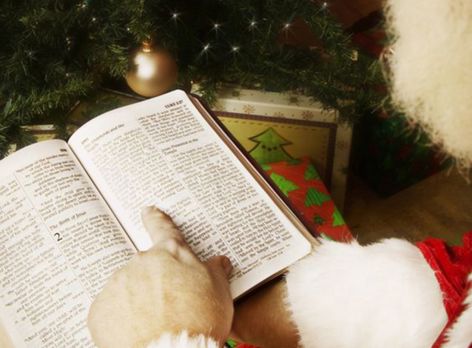 “What do Santa and the Bible have in common? Nothing, actually. Christ said that those who worship Him must worship Him “in spirit and truth” (John 4:24). The source of truth is the Bible—not the traditions of ancient pagan religions or humanly devised myths about Christ’s birth.
“What do Santa and the Bible have in common? Nothing, actually. Christ said that those who worship Him must worship Him “in spirit and truth” (John 4:24). The source of truth is the Bible—not the traditions of ancient pagan religions or humanly devised myths about Christ’s birth. 
 Image Source:
Image Source:  Image Source:
Image Source:  Image Source:
Image Source: 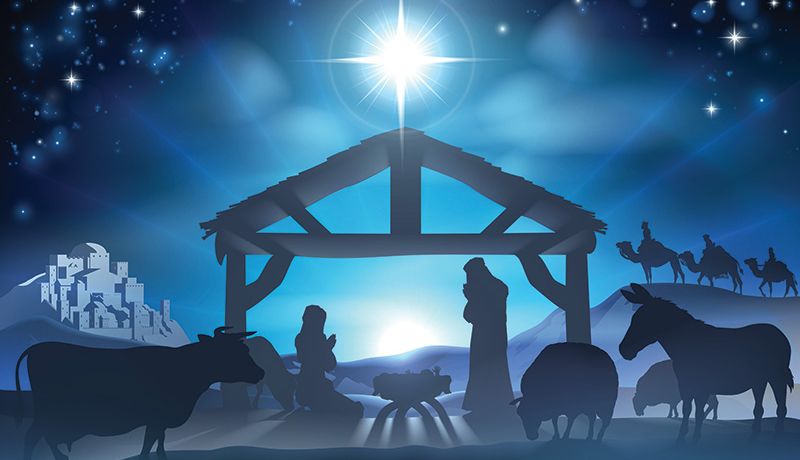 “Jesus Christ’s birth is often depicted in artwork, movies, storybooks and nativity scenes. But do these traditional images get the story right?
“Jesus Christ’s birth is often depicted in artwork, movies, storybooks and nativity scenes. But do these traditional images get the story right?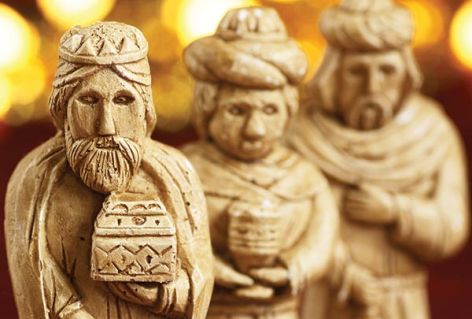 Three wise men are represented in different art forms. From top to bottom: Gypsum figurines, artist unknown; The Adoration of Magi by Pedro Atanasio Bocanegra.
Three wise men are represented in different art forms. From top to bottom: Gypsum figurines, artist unknown; The Adoration of Magi by Pedro Atanasio Bocanegra.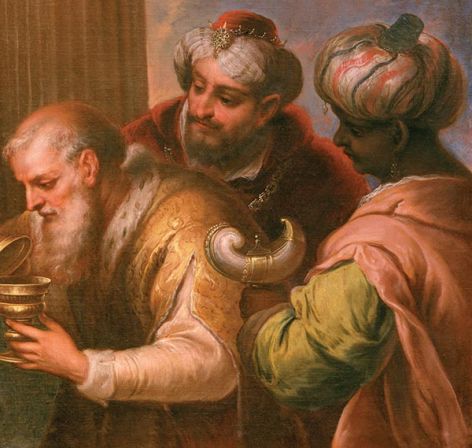 The common myths and misperceptions about Jesus’ birth are all integral parts of the imagery of Christmas. Sadly, a holiday that claims to celebrate the Messiah’s birth has been the primary perpetuator of myths that confuse people about His birth.
The common myths and misperceptions about Jesus’ birth are all integral parts of the imagery of Christmas. Sadly, a holiday that claims to celebrate the Messiah’s birth has been the primary perpetuator of myths that confuse people about His birth. 
 “Shopping for a healthy cooking oil and not sure what to buy?
“Shopping for a healthy cooking oil and not sure what to buy?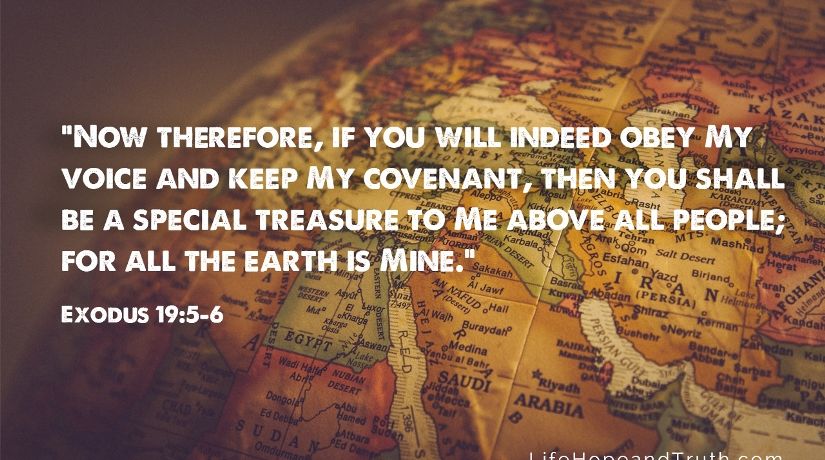 “The Bible speaks of an Old Covenant and a New Covenant. What was the Old Covenant? Were God’s laws abolished along with the Old Covenant?
“The Bible speaks of an Old Covenant and a New Covenant. What was the Old Covenant? Were God’s laws abolished along with the Old Covenant?











